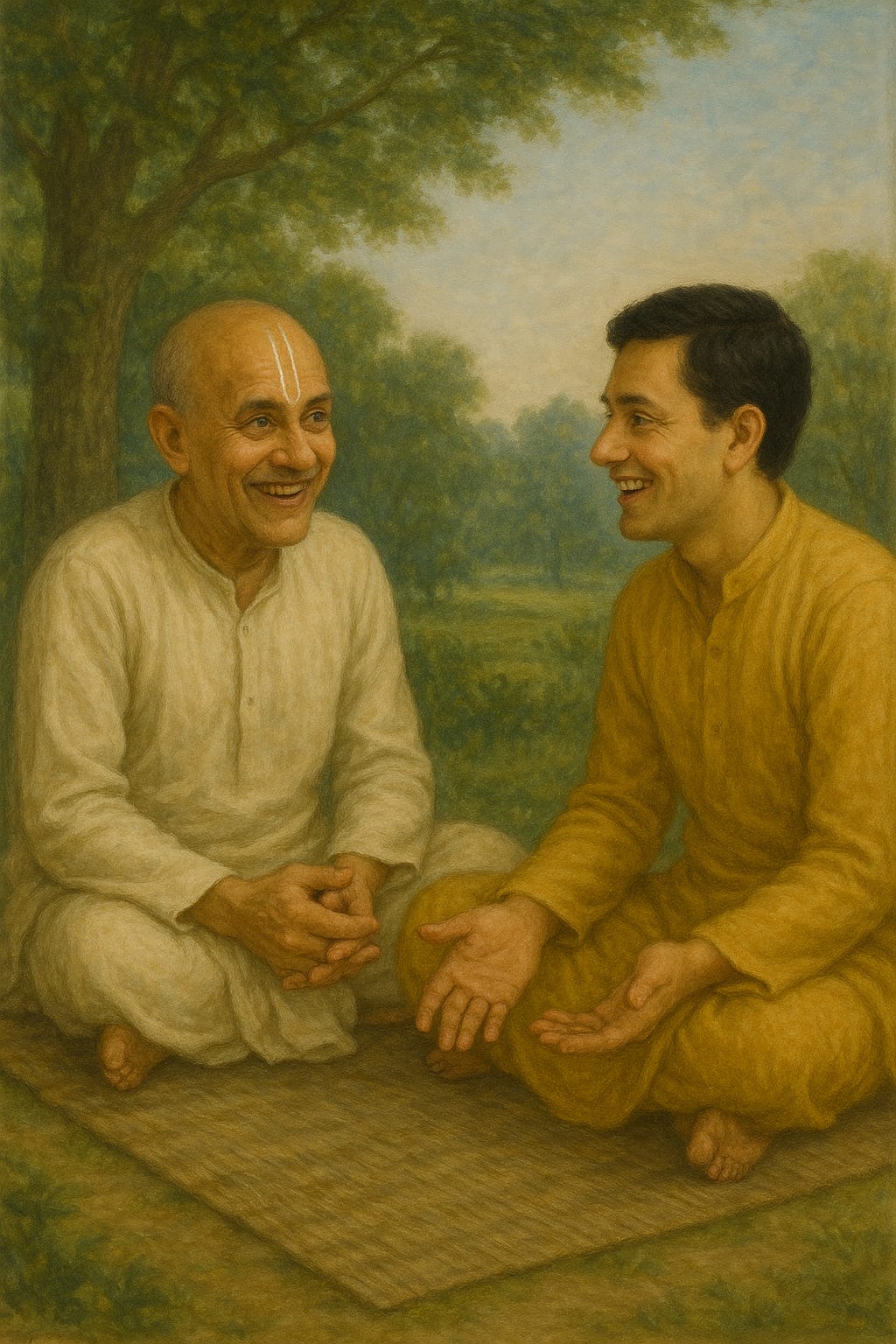Dharma of the Soul: An Introduction
The Jaiva Dharma of Sri Bhaktivinoda Thakur
Introduction to Dharma of the Soul
Dharma of the Soul is an annotated literary translation of Jaiva Dharma (1896), the philosophical novel composed by the Bengali mystic, jurist, and reformer Sri Bhaktivinoda Thakur, whose work heralded the modern resurgence of Gauḍiya Vaiṣṇavism. At once a metaphysical treatise and a fictional narrative, Jaiva Dharma unfolds as a dialogical novel set in the sacred geography of 19th-century Bengal, where the spiritual destinies of seekers intertwine with timeless theological questions. Through the evolving inquiries of characters such as Vijaya Kumāra and Vrajanātha, the text stages profound conversations on the nature of the self (jīva), the gradations of faith (śraddhā), and the rasa-based ontology of divine love (prema).
This translation, titled Dharma of the Soul, is not merely a linguistic rendering but a contemplative and scholarly act of re-voicing—a re-sounding of Bhaktivinoda’s original cadence in a contemporary register. It seeks to preserve the lyricism of the original Bengali, the conceptual precision of Sanskrit and Brajabuli citations, and the depth of devotional intent, while offering accessible annotations for the modern reader. As a work of narrative theology, Dharma of the Soul invites not only academic attention but also existential reflection, situating itself at the confluence of literature, philosophy, and lived bhakti. (continues after image).
I. Literary Method: The Dialogical Novel as Narrative Theology
In line with the Bakhtinian notion of the "dialogical novel," Jaiva Dharma resists the flattening of truth into a singular authorial voice. Rather, it dramatizes the journey toward spiritual realization through a polyphony of characters, each voicing a partial yet sincere glimpse into metaphysical reality. The dialogues are not didactic in the conventional sense, but meditative and open-ended, inviting the reader into a participatory hermeneutics. What emerges is a novel of ideas wherein narrative form becomes the vehicle for rasa-laden theological exposition. This literary quality makes Jaiva Dharma comparable to the Socratic dialogues or Dostoevskian fiction, though its emotive and devotional core is distinctly grounded in the Vedantic aesthetics of Gauḍiya thought.
II. Historical Context: A Text for a Torn Century
Composed during the late 19th century—an era of colonial encounter, spiritual ferment, and cultural reform in Bengal—Jaiva Dharma stands as a response to both the rationalist critiques of Hindu orthodoxy and the rising interest in comparative religion. Bhaktivinoda Ṛctākura, who served as a magistrate and participated in colonial intellectual circles, composed this work not as a nostalgic retreat into tradition, but as a prophetic vision of a spiritually modern dharma. It was a dharma informed by both scriptural depth and contemporary relevance. The setting in Nabadwip, the sacred land of Śī Caitanya Mahāprabhu, functions symbolically as a place where the past and the future of bhakti intersect.
III. Translational Approach: Fidelity as Resonance
Translation, in the case of sacred literature, is never neutral. It is an act of interpretation, embodiment, and offering. In this edition, I have attempted to preserve the rhythmic cadences of Bhaktivinoda's Bengali prose while retaining the philosophical integrity of his Sanskrit quotations and Vaishnava idioms. Where appropriate, annotations clarify theological terms, scriptural allusions, and historical references, aiming to support both scholarly inquiry and devotional engagement. This approach respects the layered intentionality of the text—its poetic voice, its didactic purpose, and its mystical resonance.
IV. Theological Significance: Bhakti as Existential Dharma
At its core, Jaiva Dharma is an inquiry into what it means to live truly and eternally. It posits that dharma is not merely a set of ethical codes or social duties, but the soul's intrinsic orientation toward divine service. The jīva's dharma is relational, ecstatic, and eternal, anchored in the svarūpa or spiritual identity unique to each being. In this regard, the novel serves as a cartography of spiritual becoming, mapping the soul's journey from conditioned existence toward its unmediated participation in the līlā of the Divine.
Conclusion: A Book for Seekers and Scholars
Dharma of the Soul is presented as both a literary artifact and a spiritual companion. It is meant for those who find themselves between worlds—between tradition and modernity, between academic rigor and devotional yearning. In translating this work, my hope is to open a space where intellectual contemplation can coincide with inner transformation, and where the soul, in dialogue with the eternal, rediscovers the voice it always already possessed.


